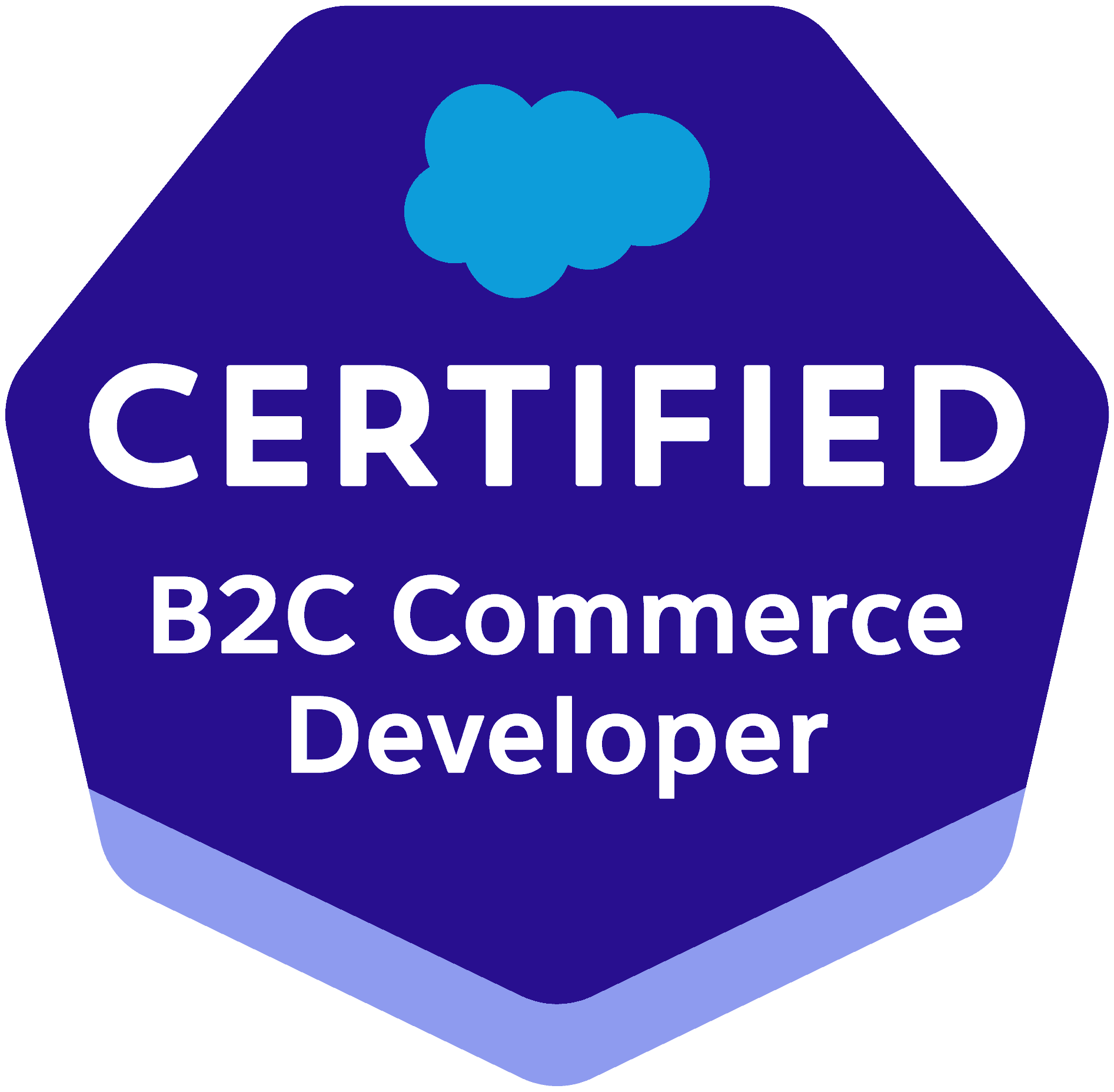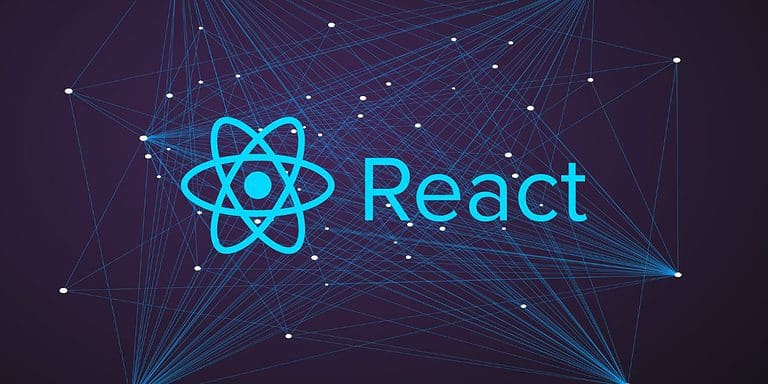So, you decided to become a Certified B2C Commerce Developer. That is great! Getting certified is a great way to confirm the knowledge you have gained from projects or training is sufficient and up to par with the “Salesforce Standards.”
But there is no harm in preparing specifically for the exam, is there? Let’s go over the exam guide and point you towards the content you might want to review to improve your chances of passing the first try!
B2C Commerce Setup (11%)
- Given a sandbox environment, configure an IDE to use WebDAV to deploy cartridges to the correct version directories.
- Given a sandbox instance and data import files, import files using the Business Manager Import/Export modules.
- Given the code for a storefront site, add the correct sequence of cartridge names to the provided cartridge path.
- Given a sandbox environment, use the Business Manager to add a new site to the instance, configuring the default currency and taxation type according to business requirements.
- Given a recently created B2C site, assign the storefront data configurations according to business requirements.
Setting up your environment to be ready to get started should come as no surprise with any project.
Within this topic, you will be getting questions about getting your sandbox up and running, uploading code to it, and setting up your site to get cracking!
It also includes some topics around configuring a site, so this topic intertwines with the next one. Everything around configuration I will add to that one!
So, where can we find some review materials? Here is a list that will get you started!
Work With a B2C Site (12%)
- Given a Business Manager task, work with the product data model to manage products and product search model, their categorization, and associated inventory and pricebooks.
- Given a configuration for tasks, such as payment and shipping information, use Business Manager to complete storefront orders.
- Given a configuration task, use Business Manager to work with Content Assets, Page Designer, Content Slots, and Content Folders.
Why is this one in the second position? Good question; it is my opinion you need to understand the features that come out of the box.
Knowing what built-in features exist is essential for answering the questions on the exam correctly (built-in always wins within certification exams) and for yourself and your implementations. There is no point in re-inventing the wheel, right?
I’m going to put this site separately since it covers so many topics, and I have already mentioned this one in a previous blog post:
This site is your one-stop shop for a quick overview of all content available on getting to know Salesforce B2C Commerce Cloud.
But, what else is available?
Data Management Using Business Manager Usage (24%)
- Given a business requirement, modify site search preferences and settings to enable searching for a specified term or product attribute.
- Given a business requirement, create and configure a new search refinement and sorting definition that can be used on the storefront.
- Given a debugging requirement or code, configure the logging categories and access the logs in Business Manager.
- Given business requirements, extend the storefront to expose a new attribute on an existing system object type.
- Given a business need to store custom data, determine if a custom object is needed and create and configure as required.
- Given a problem or performance issue and data, use relevant tools to inspect code performance and determine and implement solutions (cache configuration, profilers, etc) to resolve this issue.
- Given a specification and a sandbox instance, configure OCAPI permissions for Data and Shop APIs.
- Given a service configuration, recognize how they are applicable to the development process.
Let us move on to the third section, focusing on configuration and the business manager.
Prepare to get quite a few questions about the business manager, even though this is a “developer” certification. As I mentioned in the previous part, knowing what is out-of-the-box in a platform is as important (or even more critical) as writing good custom code.
You will notice that the main focus of this section is actually on logging, debugging, and performance.
Let’s make a list of available content!
- Search (Preferences, Settings, ...)
- Log Files
- Extending System Objects (Attribute Manager)
- Managing Custom Objects
- Site Performance (General)
- Pipeline Profiler
- Code Profiler
- Technical Dashboard (Reports & Dashboards)
- Troubleshooting Performance Issues
- Static and Page Cache
- Cache Information Tool
- Custom Caches
- OCAPI Settings
- OCAPI & Web Service Framework
- Standard Job Steps
Application Development (53%)
- Given a development task, code ISML templates that use functionality such as: local include, remote include, components, and other ISML tags.
- Use debugging best practices and techniques to troubleshoot scripts and controllers and verify outcomes.
- Given a requirement, create and extend the functionality of a JavaScript controller that leverages models, decorators, factories, or helpers following API best practices and renders a template or returns a JSON response.
- Given a business requirement and design for a new marketing page, develop page types and components to allow a marketer to build a page with the Page Designer tool.
- Given a requirement to accept, validate, and persist information from a storefront customer, modify the appearance of a form, add validation and CSRF protection, and use bindings to process fields.
- Given localization requirements, implement and enhance templates, form definitions, static files, properties files, and persistent object attributes to ensure that pages are displayed in the expected language.
- Given a logging task and existing configuration, write code that logs non-sensitive data to custom log files with different log levels.
- Integrate, deploy, and use a service instance based on a given requirement.
- Given a use case, extend functionality or capture an event using hook extension points.
- Given code that violates documented best practices, identify the issues and modify the code to conform with best practices including performance and scalability.
- Given a business requirement, use OCAPI Shop and Data APIs to enable interoperability with an external system.
- Given a business requirement to perform a scheduled task, develop jobs and code job scripts.
Phew! Finally, some development in this Certificate Exam! Since it is for developers, more than 50% of your score depends on your development skills.
But knowing how to write custom code will not be enough to pass this exam! So be sure to focus well on the above sections.
- PLC: B2C Commerce: Cartridges
- PLC: B2C Commerce: SFRA Controllers
- PLC: B2C Commerce: SFRA Models
- PLC: B2C Commerce: ISML Usage in SFRA
- PLC: B2C Commerce: Client-Side JavaScript in SFRA
- PLC: B2C Commerce: Forms
- PLC: B2C Commerce: Transactions and SFRA Middleware Events
- PLC: B2C Commerce: Job Framework
- PLC: B2C Commerce: Salesforce Commerce API
- Webinar: SFRA - Architecture Deep Dive
- Webinar: Cartridges & Controllers
- Webinar: Models, ISML, and Client-Side Javascript
- Webinar: Forms, Transactions, and Middleware Events
- Webinar: Page Designer and Job Framework
- Webinar: Developer Academy
- Test: Knowledge Check (Unknown who made this)
What if I fail the exam?
Failing a certification exam is not the end of the world! Let’s make it clear. You can do successful implementations within Salesforce B2C Commerce Cloud but still fail this certification.
You might not have touched all of the different areas of Salesforce B2C Commerce Cloud and SFRA within that project.
Be sure to remember the questions you had trouble with; those are “gaps” in your knowledge that you want to fill.
Go back and revise those topics, do some experiments on a Sandbox and get back on that horse!
What if self-study isn't my thing?
Not to worry, there are instructor-led courses available at Trailhead Academy!
I'm not a partner. Can I access PLC?
Unfortunately, the PLC (Partner Learning Camp) is only available to registered partners of Salesforce. It is a platform to empower partners to learn Salesforce products and make sure they succeed with their customer implementations.
Can I wing it?
Off-Course! This certificate should be a synch if you have been doing Salesforce B2C Commerce Cloud (and SFRA) development for multiple years/projects.
Bit of warning, this is only true if you also did configuration work in the Business Manager (Set up the search, categories management, Jobs, OCAPI, and so forth)
After 2-3 projects (2 years), I did the certificate myself without much preparation and passed on the first try. I even had the handicap that it was still a SiteGenesis exam, and I only had experience with SFRA.
Just don’t assume that it is going to be easy! This is a certification exam, not a Trailhead module.



